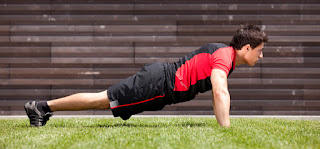Seeing into the heart of the matter
Workouts that get your heart pumping
are known as cardio
(short
for cardiovascular) exercises, and these improve the health of your heart and
blood vessels. Cardio workouts also burn calories, which helps you lose weight.
The simplest — and, perhaps, the cheapest — cardio exercise is walking. Other popular
cardio exercises include running, cycling, in-line skating, swimming, rowing,
and (if you live in a snowy winter climate) snowshoeing and crosscountry skiing. You don’t have to brave the outdoors to get a
cardio workout, however.
Getting buff with weights
Many men focus heavily on weight
training, while some women shy away from it. The truth is that both men
and women need to do some strength training (along with some cardio
workouts, discussed in the preceding section, to get the heart and blood
vessels into tip-top shape) for one important reason: to help burn more calories.
Strange as it seems, weightlifting improves your resting metabolism,
which means you turn into a fat- and calorie-burning machine
Two for the price of one
A few activities combine cardio and
strength training into one workout. One of the most popular, circuit training ,
combines a cardio warm-up and cooldown with a series of
weight-lifting and other strength stations. Not only can circuit
training save you time, but it’s also a lot of fun, because you move from station to
station every 30 or 40 seconds. Two other popular strength-cardio
exercises are yoga and Pilates, which tend to focus on core strength, the strength and flexibility of your
midsection.
Discussed in Chapters 16 and 17,
respectively, yoga and Pilates can be highenergy, revved-up workouts or soothing,
mind-body workouts that leave you feeling refreshed.













